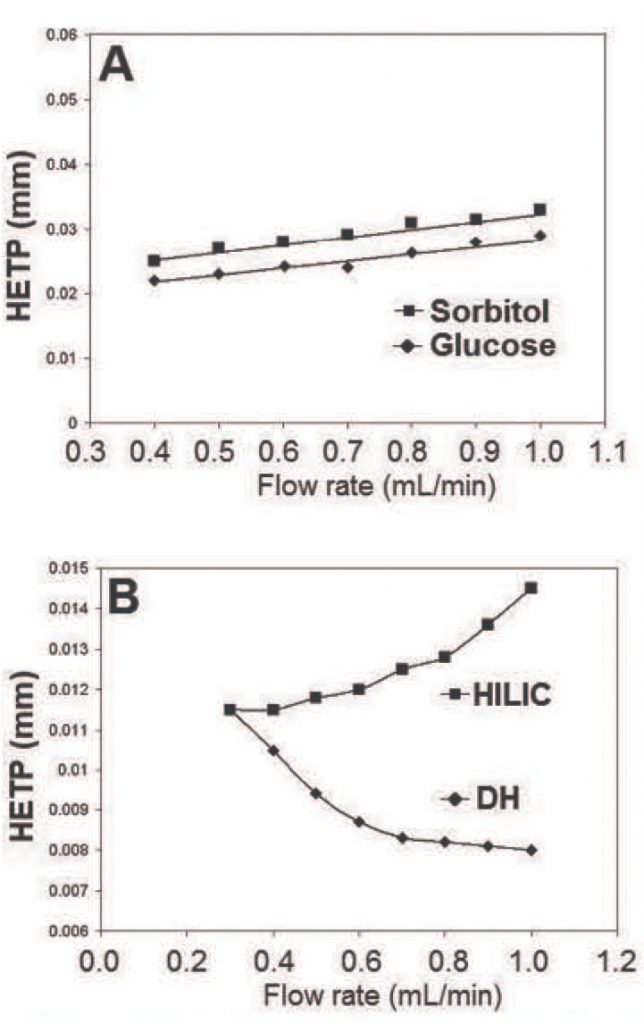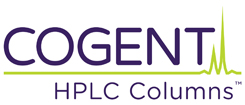Aqueous Normal Phase (ANP) Efficiency Measured with Sorbitol, Glucose & Uracil
Figure A is an excerpt from a study that investigated analyses of Glucose and Sorbitol on TYPE-C Silica based HPLC Columns and found that the efficiency of ANP is better than observed with HILIC. A Cogent Diamond Hydride Column (2.1 x 150mm with a Particle Size of 4µm) was used and Flow Rate v. HETP was plotted as shown. From the plot it is evident that while the Flow Rate is increased by a factor of 2.5 the Efficiency is only slightly lower (~15%).
A similar Cogent Diamond Hydride (4.6 x 150mm and Particle Size of 4µm) and a typical, commercially available HPLC Column designed for HILIC mode, (with equal specifications) were used to retain and separate Uracil under the same conditions. Figure B shows a plot of “Efficiency vs. Flow Rate” for both Columns. From the graph it can be seen that efficiency increases as the Flow Rate increases from 0.3 to 1.0mL / minute for the ANP Column while in contrast, the HILIC Column’s efficiency dropped by more than 30% over this same range of Flow Rates.
It should be noted that linear Flow Rates are more than 6 times greater in the 2.1mm Column than in the 4.6mm.
Figures:
A. Sorbitol, Glucose. On a Diamond Hydride Column
B. Uracil. DH and HILIC Column Comparison
Method Conditions
Columns:
— Figure A: Cogent Diamond Hydride™, 4μm, 100Å
— Figure B: Cogent Diamond Hydride™, 4μm, 100Å
Catalog Nos.:
— Figure A: 70000-15P-2
— Figure B: 70000-15P
Dimensions:
— Figure A: 2.1 x 150mm
— Figure B: 4.6 x 150mm
Mobile Phase:
—A: DI Water / 0.1% Formic Acid
—B: Acetonitrile / 0.1% Formic Acid
Flow rate: Variable, See Charts
Detection: UV (Uracil) and LCMS (Sorbitol, Glucose)
Injection vol.: 10μL
Notes: Charts and Methods are adapted from “Analysis of Hydrophilic Metabolites in Physiological Fluids with HPLC-MS using a Silica Hydride-Based Stationary Phase”. J.J. Pesek, M.T. Matyska, J.A. Loo, S.M. Fischer, T.R. Sana, J. Sep. Sci., 32 (2009) 2200-2208.



